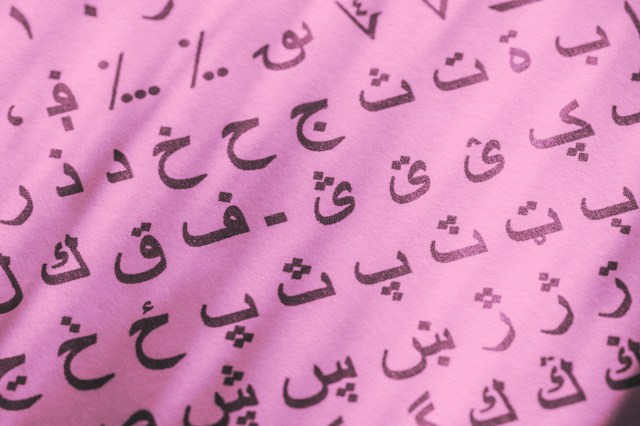
Learning the alphabet is as easy as ABC … or AБB, ABΓ, and ႠႡႢ, depending on your language (those examples being from Cyrillic, Greek, and Georgian). English, Spanish, French, and many other languages use the 26-letter Latin alphabet that you likely learned in preschool, along with a handy song. But there are eight standard alphabet groups worldwide: Arabic, Aramaic, Armenian, Brahmi, Cyrillic, Georgian, Greek, and Latin.
Most Western languages (English, the Romance languages, Germanic languages) use the Latin alphabet, with one notable exception. The Greek language is considered a Western language, but it’s an outlier in that it has its own alphabet. This ancient alphabet, developed around 1000 BCE, is the ancestor of all modern European languages. The word “alphabet” itself comes from the first and second letters of the Greek lettering system: “alpha” and “beta.” There are 24 letters in the Greek system, and while many of them look similar to Latin letters (Alpha is “A,” Epsilon is “E,” Kappa is “K,” Chi is “X,” for example), they have different names. We see evidence of the Greek alphabet adorning fraternities and sororities all over the United States, but we often use the Latin alphabet to write the words (Phi Beta Sigma is ΦΒΣ in the Greek, for example).
Arabic is an alphabet composed of 18 shapes and 28 phonetic sounds. This alphabet is used by Arabic speakers and those who speak Farsi, Dari, Tajik, Pashto, Kurdish, Urdu, and other Middle Eastern languages and dialects. Aramaic is an ancient language spoken on a smaller scale in the Middle East, and the alphabet consists of 22 letters that indicate consonants (but some can stand in for vowels). It’s used mainly in a liturgical sense by religious communities in Iraq, Lebanon, and Syria. Aramaic has close ties to Brahmi, an ancient script used throughout Asia and the Indian subcontinent. The Brahmi script is used by many language families, including Mongolic, Tai, and Dravidian. Sanskrit and Hindi developed out of the Brahmi script.
The Armenian alphabet and the Georgian alphabet are widely used throughout the Caucasus region. The Armenian script, with 31 consonants and seven vowels, developed in the fifth century. The unique Georgian alphabet, meanwhile, is used only to write the Georgian language. This alphabet, comprised of 33 letters without any distinction between upper or lower case, has three variations still in use: mrgvlovani, nuskhuri, and mkhedruli. The Cyrillic script, consisting of 20 consonants, 10 vowels, a semivowel, and two modifier letters, was developed in the ninth or 10th century. It forms the basis for more than 50 languages, including Russian, Kazakh, and Serbian.
Some languages — Mandarin and Japanese, for example — don’t use a traditional alphabet, but use logosyllabic icons to represent different sounds. Written characters in Chinese languages are called hanzi, whereas Japanese has three different sets of phonetic symbols: hiragana, katakana, and kanji.
Appreciating that world language systems are vast, with incredibly rich histories, goes a long way toward understanding the melting pot that is the English language.















